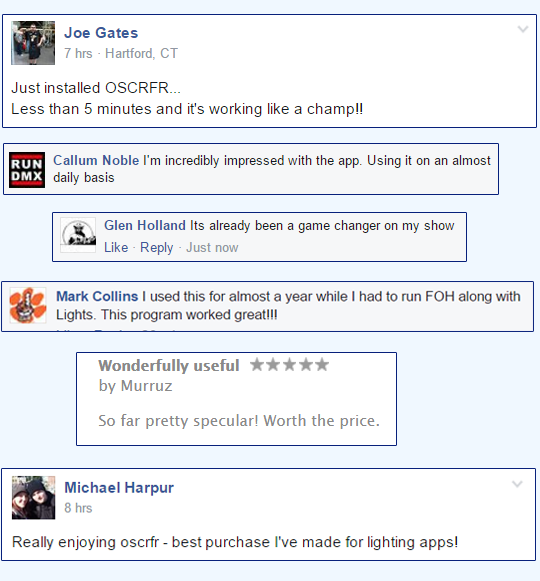
- #IMPORTING LIGHTWRIGHT 6 PATCH INTO EOS CONSOLE FOR MAC#
- #IMPORTING LIGHTWRIGHT 6 PATCH INTO EOS CONSOLE PATCH#
- #IMPORTING LIGHTWRIGHT 6 PATCH INTO EOS CONSOLE FULL#
- #IMPORTING LIGHTWRIGHT 6 PATCH INTO EOS CONSOLE SOFTWARE#
- #IMPORTING LIGHTWRIGHT 6 PATCH INTO EOS CONSOLE LICENSE#
In the dialogue box, enter 900 for the group number and label it FOH (or whatever number and label you prefer).
#IMPORTING LIGHTWRIGHT 6 PATCH INTO EOS CONSOLE FOR MAC#
Keyboard shortcut for Mac users is Command, Shift G. Go to Utilities>Create Console Group from Selected Worksheet Rows. This is a big show for me, so it will run well out of what my screen shot will display. In Lightwright, select all of your FOH fixtures by clicking on the first item, holding shift and clicking on the last item. I like group 900 to be all front of house fixtures for when the main comes in, and then groups 901-904 to be all lighting in wings 1-4. There are five groups I always have in my shows, and they are a treat to do in Lightwright. Now that everything is speaking (assuming Windows Firewall isn’t being “helpful” and preventing it), let’s make some groups.
#IMPORTING LIGHTWRIGHT 6 PATCH INTO EOS CONSOLE FULL#
Depending on the show file size, it may take a full minute or two for the first sync to be complete. Click the box at top for Use Console Link and I would suggest clicking the box for Get All Cues Now if you have any in the board. If you are on a PC, and are using both Lightwright and EOS on the same computer, you will need to enter 127.0.0.1 instead of the console IP. In the dialogue box that opens, input the IP Address of your console (found by pressing About in EOS and reading the info on the left under IP). Now click the Light bulb shaped icon in the upper right hand corner. In Lightwright, go to Setup>Dimming&Control and under Console type, select the only choice: ETC EOS Family. I have the ports numbered (80) for use with TouchOSC, but they are not relevant to Lighwright. In EOS, go to Setup>System Settings>Show Control. Start up Lightwright if it’s not already and make sure both are in the same show file. It will save you hours of misery in the future.Ĭlick Accept and exit the Shell. This little “1.0 vs 1.1” thing is worth remembering for ANYTHING else with OSC integrating with EOS. Breaking with tradition- you want to choose the older protocol version 1.0 NOT 1.1. Immediately below that, notice that there is a pulldown menu for OSC to choose between two versions of the protocol. In the network tab, scroll down to Interface Protocols and make sure that UDP Strings & OSC is turned on. (Check out my earlier blog post that covers exporting data from Lightwright and importing it into EOS.) Today, we will get the two applications linked and then build some groups that would be very annoying to build without OSC.īoot up your console, or open EOS Nomad and go into the shell by clicking Settings.
#IMPORTING LIGHTWRIGHT 6 PATCH INTO EOS CONSOLE PATCH#
In this case, ETC opened up all functions of EOS to OSC control, and Lightwright developed functions to import all your show data and then name cues, create scenes, push all the short labels from Lightwright into the patch of EOS, create and manage groups, as well as the better-known ability to turn on lights for focus or patch check. OSC (Open Sound Control) is a protocol for communication between computers. The latest versions of Lightwright have addressed the needs of Programmers and Designers in really compelling ways through the use of OSC. The functions of load and patch error checking alone make it worth the purchase on a large show. Beginning January 4, 2021, all Lightwright sales are direct to the customer through Lightwright LLC’s new sales and support portal at a big fan of Lightwright, probably since a great deal of my early career included being a Production Electrician.
#IMPORTING LIGHTWRIGHT 6 PATCH INTO EOS CONSOLE LICENSE#
The last day of Lightwright license sales through City Theatrical was December 31, 2020.
#IMPORTING LIGHTWRIGHT 6 PATCH INTO EOS CONSOLE SOFTWARE#
Sam Molitoriss, a recent graduate of CMU, has strong roots in lighting combined with a keen focus on training, software development, and business organization, and I look forward to the expertise he brings to the company in our move of Lightwright into the future.Īs Lightwright’s horizons have expanded and our online lives became more fluid, it became clear that it was time to change the way we connect to customers, too.

This new partnership will sell directly to theaters, venues, designers, and electricians in all areas of entertainment, including concert, film, television, theatre, and special events. My goal is to keep Lightwright supported and growing long after I retire. Since the first sale of ALD in 1984, Lightwright’s reach has expanded every year, but it also meant that running the business as a one-man operation has become more and more difficult for me. It is a partnership betwen John and Sam, who will share the work of supporting and developing Lightwright. On November 17, 2020, John McKernon and Sam Molitoriss announced the formation of Lightwright LLC, a new home for future Lightwright development, support, and sales.


 0 kommentar(er)
0 kommentar(er)
